Product headlines. At first glance, they seem incredibly simple.
They’re just a handful of words used to describe what a product does, what its benefits are, why you should buy it, etc.
Yet the difference between a great headline and one that’s abysmal is night and day.
And you know when you spot an amazing headline.
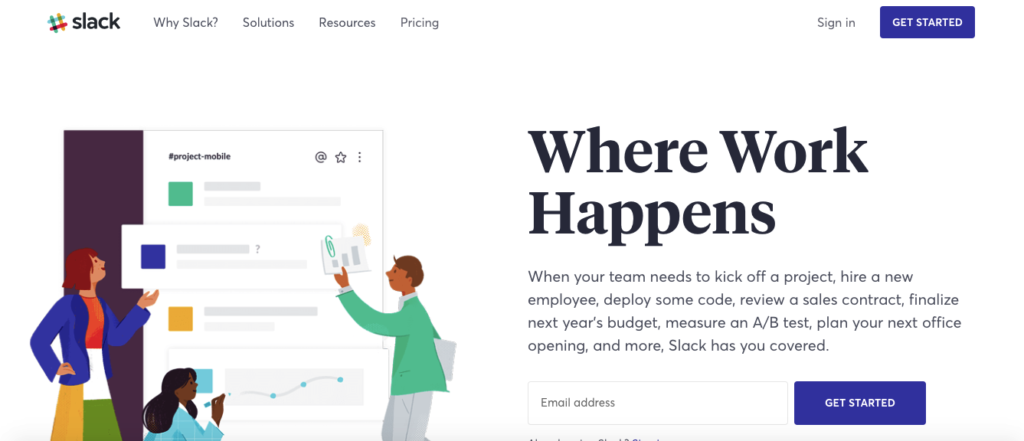
It grabs your attention, pulls you in and just “pops.”
The question is, what separates a killer product headline from one that’s just meh?
Well of course there’s a fair amount of subjectivity involved.
But at the end of the day, there’s a definitive headline writing formula that when followed gets eyeballs on your product and leaves prospects compelled to learn as much as possible about it.
And ideally, they’ll be so compelled that they’ll take action and actually make a purchase.
For this post, I’m going to take a deep dive into the details of that formula and discuss some specific techniques that go into it.
So by the end, you’ll be able to craft killer product headlines regardless of the niche or industry.

Table of Contents
The AIDA Framework
One of my favorite copywriting techniques is called the AIDA formula.
It stands for:
- Attention
- Interest
- Desire
- Action
When implemented correctly, it helps take prospects from never having heard of your product to being ready to buy.
Jesse Forrest explains in Start Copywriting that, “It’s important to apply the AIDA formula because it creates a psychological ‘slippery slope’ with your readers. Grabbing their attention, keeping them interested, creating desire for your offer, and then motivating them to take action!”
Here are a couple of examples of the AIDA framework in action.
First there’s Moz.
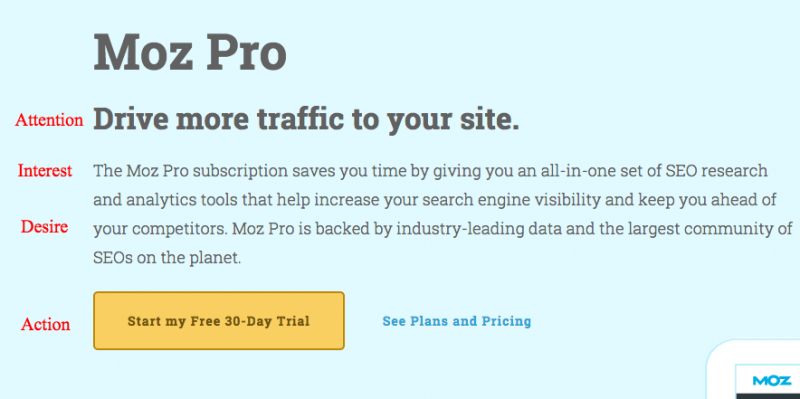
Source: Moz
Then there’s Apple.
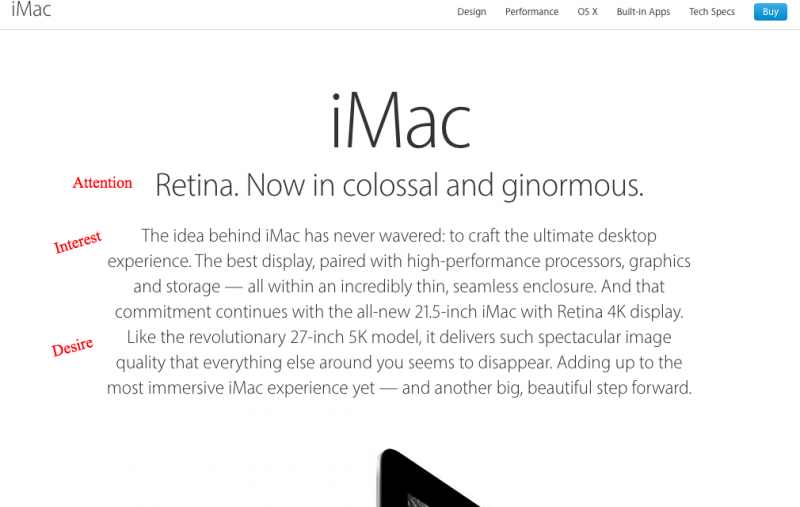
But considering that this post is specifically about headline writing, we’ll be focusing mainly on the “attention” aspect of AIDA.
After all, that’s the primary purpose of a product headline.
And you first need to get that right in order to get prospects to the other steps.
So how exactly do you grab their attention?
How do you make your headline compelling enough so that they want to learn more about your product and ultimately take action?
Here’s what I suggest.
1. Focus on Your Ideal Buyer
Here’s the thing about a product headline.
You can’t write it for every single segment of your customer base and expect to have success.
It’s simply not possible.
Attempting to write a headline for a massive group of buyers typically results in it being vague and doesn’t really hit the mark for anyone.
Like the old saying goes, “Try to please everyone and you end up pleasing no one.”
That’s why I suggest focusing solely on your ideal buyer and writing a description with them in mind.
I find the best way to do this is to take a look at your buyer personas and determine which one you’re trying to reach with the particular product at hand.
Then put yourself in that person’s shoes and consider which aspects of the product they’re most interested in.
What would stick out to them?
What are their pain points?
What types of questions and concerns would they have?
This should ultimately provide you with guidance on how to approach the finer details of your headline as well as the overall copy.
So that should be your starting point.
2. Make it Stupid Simple
If you look at some of the best headlines out there, one of the main things you’ll notice that they have in common is that they’re simple.
The way I see it, being complex and convoluted and making people think too much is a recipe for disaster.
Those products never sell.
What you want is for your headline to be so simple that prospects can take one look at it and immediately “get it.”
Moz did an excellent job with this with their product Moz Pro where the headline was “Drive more traffic to your site.”
So did Google when explaining their cloud storage platform Google Drive.
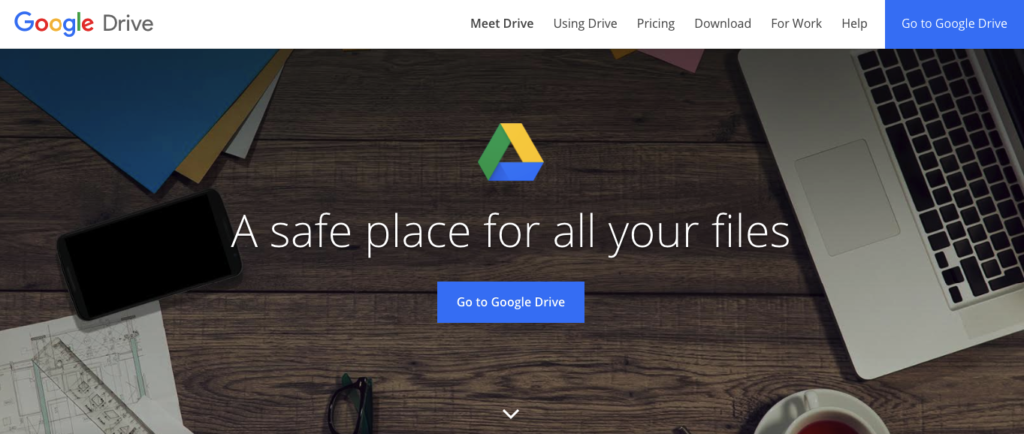
I think that many marketers shoot themselves in the foot trying to be too slick, clever or witty with their headlines.
And in the process they end up making it overly confusing.
So when it doubt, just aim for stupid simple so that anyone can quickly scan and get it.
3. Convey Instant Benefits
Again, you don’t want to make people work too hard to figure out why they should buy your product.
It’s all about making that instant connection and letting them know how your product addresses their pain points.
Ahrefs does a great job with this by explaining the key benefits customers get by using their platform.
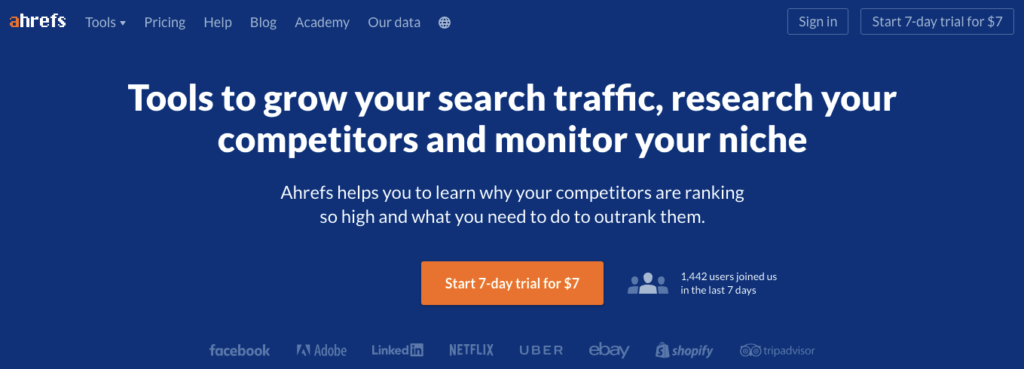
So does BuzzSumo.

What I suggest is spending some time brainstorming what your customers’ primary pain points are and how your product solves them.
It won’t make sense to touch on every single pain point, so you’ll want to focus on the top one, two or three benefits and build your headline around them.
By seamlessly showing prospects how your product can improve and simplify their lives, they’ll be far more compelled to learn more and dig deeper than if you just said “here’s X product.”
4. Be Hyper-Specific
Ambiguity is the enemy of great copywriting.
A big part of grabbing a prospect’s attention in zeroing in on the specifics.
So that’s what you want to do here.
Take for example this piece of copy from Bodyweight Training Arena that specifically states that it’s for beginners.
So for those just starting out, they’ll know that this product is right up their alley.
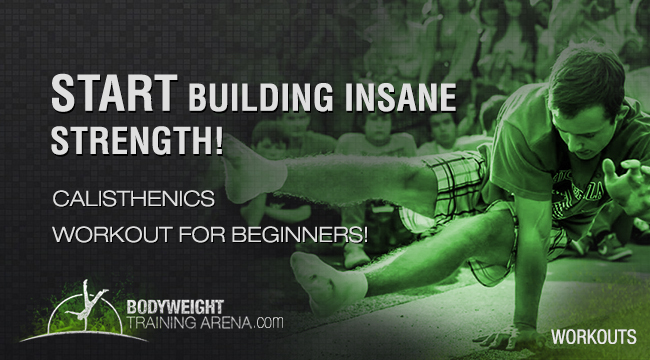
Or this flexible dieting eBook by Vegan Proteins that’s designed strictly for vegans.
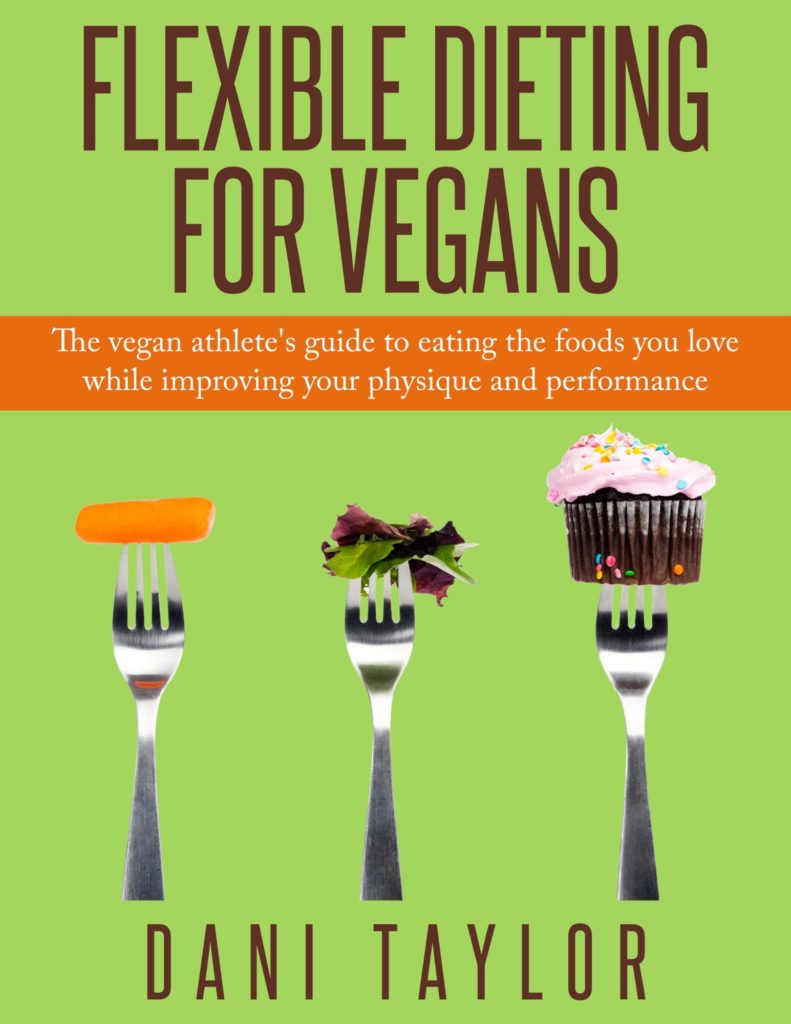
While you don’t necessarily want to exclude certain members of your demographic, it’s helpful to be as specific as possible so that a prospect will know that your product is right for them.
This goes back to my initial point of focusing on your ideal buyer.
It’s all about clarifying who your product is for and how it will be an asset to them.
5. Entice with Sensory Words
This one doesn’t apply exactly to the main headline but rather the sub-section beneath it.
The Enchanting Marketing team explains, “Sensory words are more powerful and memorable than ordinary words because they make your reader see, hear, smell, taste or feel your words.”
They elaborate by saying, “When reading non-sensory words, your brain processes text. But when you read sensory words, different areas of your brain light up. Your brain processes sensory words as if you taste a sweet cake, as if you see a dazzling display of colors, as if you feel a rough texture.”
They also provide some examples:
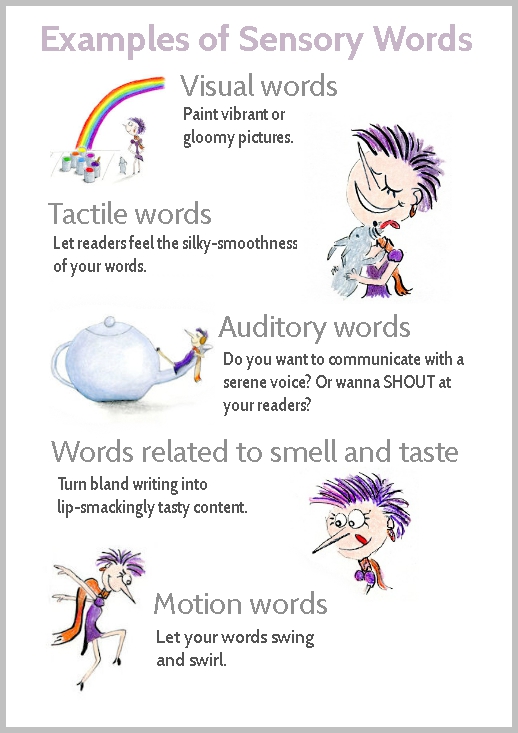
When done right, sensory words can have a tremendous impact, making your copy much more vivid.
In turn, your message is more likely to stick and have a bigger impact.
Naked Juice pulls this off well with this product page.
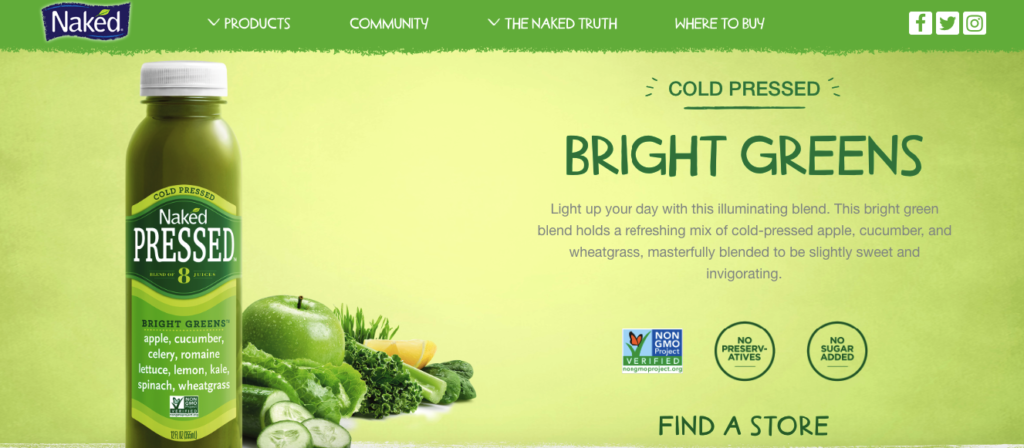
Notice their use of the words “refreshing,” “sweet” and “invigorating.”
I don’t know about you, but this makes their Bright Greens juice seem really appealing to me, and I can just envision what it would be like to take a big gulp.
While sensory words won’t be viable all of the time, they can certainly be useful on many occasions.
Just check out this post from Enchanting Marketing for a huge list of sensory words that target all five senses.
6. Throw in Some Action Words
The term “action words” is something that’s often associated with resumes where they’re intended to catch a recruiter’s attention.
But they can also be used when writing headlines.
At their core, action words are catchy sounding verbs that help people better understand your product and make it easier to imagine themselves using it.
Here’s a good example from Evernote.
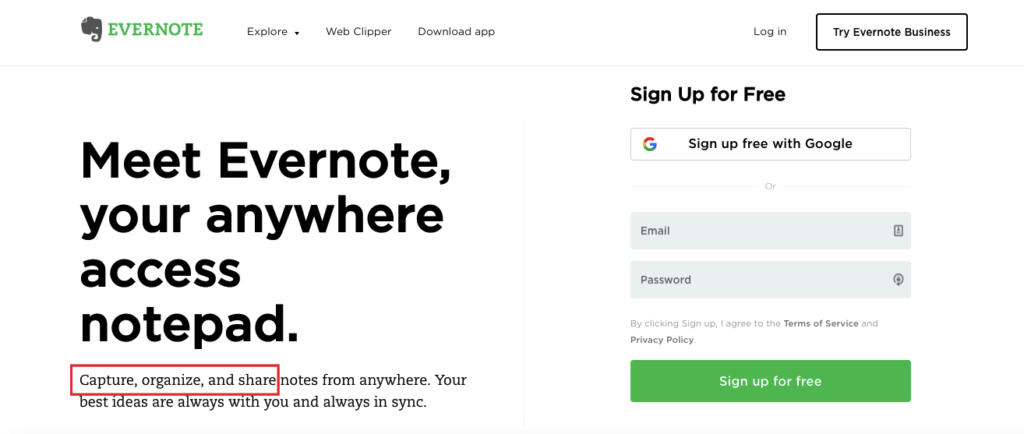
“Capture,” “organize” and “share” are all movement-inspired words that help you get a feel for what it’s actually like to use their product.
It’s nothing over the top.
But this short and concise sub-section really comes to life with action words.
7. How to Write Good Product Headlines
Up until this point, I’ve outlined a formula and specific techniques for crafting killer product headlines.
But I would also like to touch on some ways to make the process easier so you can generate ideas more quickly and fine-tune your headlines for maximum impact.
Here are a couple of strategies that I recommend.
8. Use Amazon for Ideas
Let’s be honest.
Even when you’re following a formula, headline writing can still feel insanely difficult.
And coming up with the perfect sequence of words is definitely easier said than done—even for professionals.
That’s why it’s nice to have a few trick up your sleeve. Some hacks if you will.
One particular strategy I like involves using Amazon to help me come up with ideas.
It works by searching for a broad topic and then skimming for words to use in your headlines.
Allow me to provide an example.
Let’s say that you’ve created a productivity app and you’re looking to create an awesome headline to promote it.
You can get a ton of ideas just from browsing through Amazon.
Start by searching for a broad keyword—in this case “productivity.”
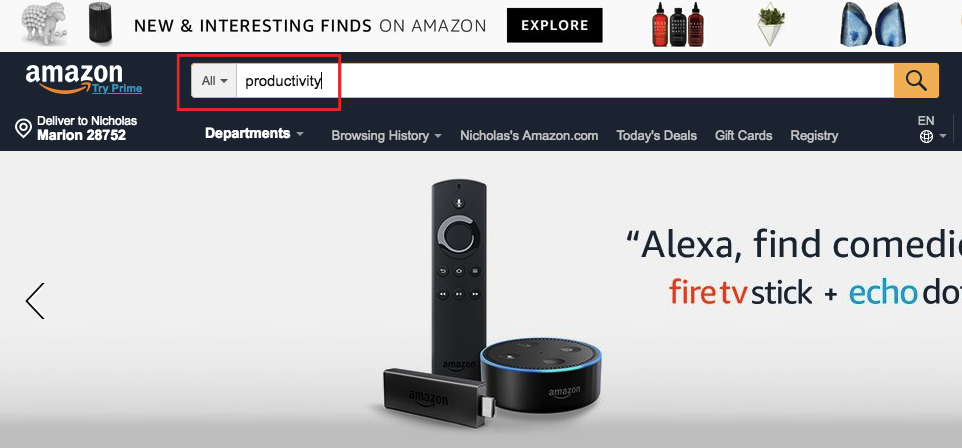
Click enter and you’ll instantly get hundreds of results.
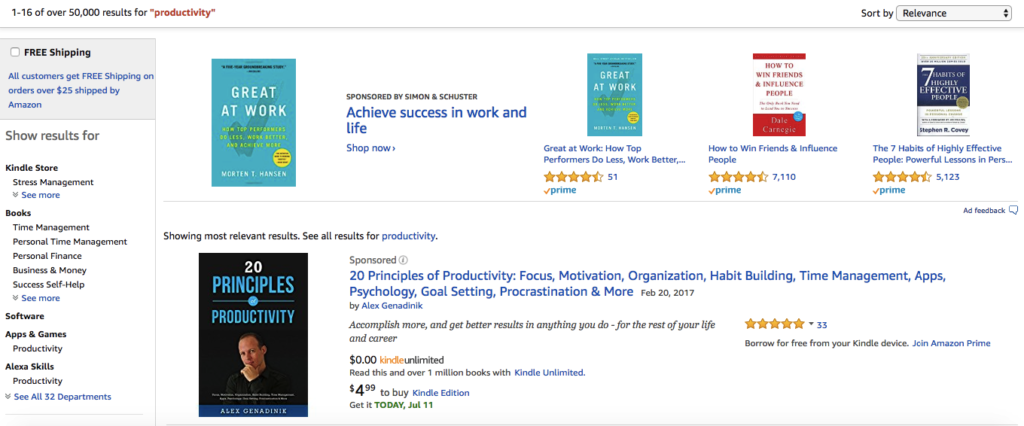
What you want to do is start checking out various products, and you’ll be amazed at all of the potential words that you can insert into your headlines.
Here are a few right off the bat from a book title.

And you can get a lot more by scrolling through the comments section.
Here’s one particular comment that has some excellent phrases that could potentially be incorporated.
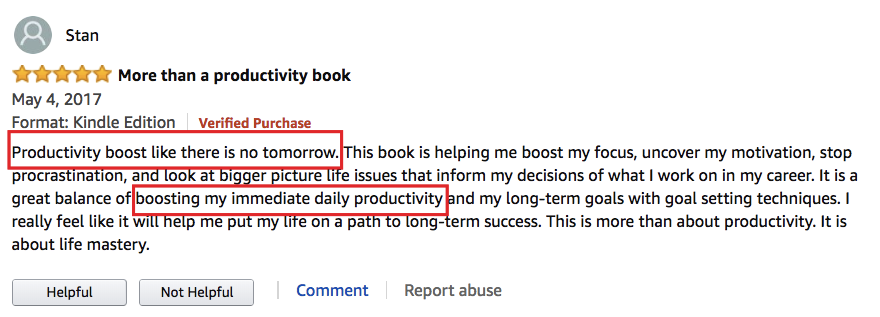
For instance, you might use “Boost your daily productivity like there is no tomorrow” as your headline.
This is a completely random example, but you get the idea.
Amazon can be a goldmine for this.
9. Turn a Mediocre Headline into an Epic One
Another thing I’ve learned is that you can’t expect perfection right away.
Just like a writer starts with a rough draft and then polishes it off later, there’s a way that you can begin with a so-so headline and eventually make it excellent.
An added plus is that it eliminates much of the pressure you may feel.
Here’s what you do.
Make a blank list of potential headlines. Five is usually a good number.
- Headline 1:
- Headline 2:
- Headline 3:
- Headline 4:
- Headline 5:
Now start with a decent headline, and then create better variations of it.
Let’s use a productivity app as an example again:
- Headline 1: Boost your productivity
- Headline 2: Boost your productivity with this simple to use app
- Headline 3: Boost your productivity and simplify your life like there’s no tomorrow
- Headline 4: Etc.
- Headline 5: Etc.
This basically takes a stream of consciousness approach where you start with something boring and gradually build upon it until its epic.
It’s also nice because you can have others check out the list and get their feedback on what they like best.

Conclusion
Writing headlines is one of those things that looks easy on paper but can be quite tricky when you get right down to it.
But when you see an awesome product headline, it seems so obvious.
Like the copywriter effortlessly wove the ideal words together.
Fortunately, you don’t need to be a virtuoso to do this.
At the end of the day, you’re just picking and choosing the right sequence of words and piecing them together in a way that compels prospects to want to learn more.
While there is no magic bullet that works for every occasion, I feel that the points outlined here are a pretty straightforward way to go about it.
By understanding who your ideal buyer is, keeping your copy simple and specific and throwing in some well sensory and/or action words, the end result should be product headlines that pops.
This should set the stage for prospects wanting to learn more and ultimately taking action.
And in the long run, this should have a positive impact on your conversion rate.



